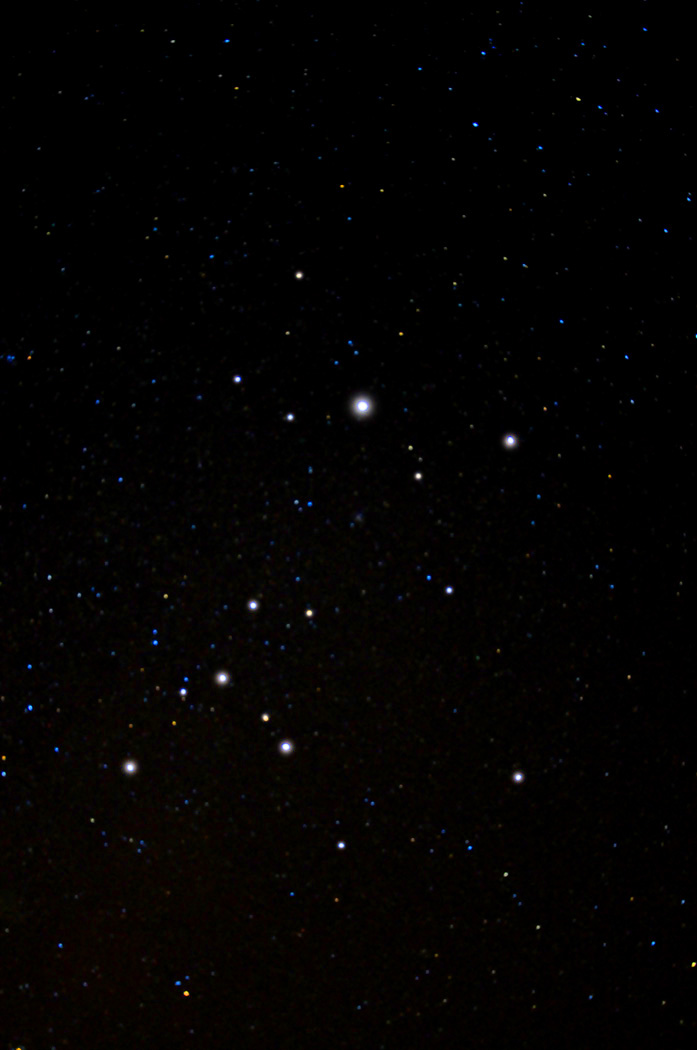Canis Major
Canis Major is a late winter, early spring constellation that appears in the southern sky. It has the distinction of hosting the visually brightest star in the entire sky, Sirius, a blue-white star about 8 and 1/2 light years from Earth. With a visual magnitude of -1.46, Sirius is twice as massive as the sun and about 25 times as bright, with an absolute magnitude of about +1.4 and a spectral type of A. Sirius is so bright that it can be seen with the naked eye in daylight if conditions are just right. The system is binary, with a white dwarf companion star in orbit around Sirius. The white dwarf, the core of a dead star, shed its outer layers about 120 million years ago and is fated to live out its old age slowly cooling off. Although always a challenge to see in a telescope, the white dwarf has been moving farther away from its brilliant companion since 1994 and can be glimpsed now with large amateur instruments. There have been some indications that the system might be host to a third object, either a much fainter star, or perhaps a planet. But to date, no such object has been confirmed. Almost directly below Sirius is the open star cluster M41, a collection of about 100 stars which can be detected with the naked eye under ideal conditions, as a faint fuzzy glow. The cluster formed about 200 million years ago and lies about 2300 light years from Earth.
 |